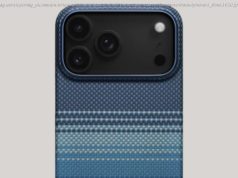The OPPO A71 (3GB) brings the AI-powered selfie beautification to the budget segment, along with Qualcomm’s Snapdragon 450 octa-core processor. Our hands on
“The A71 (3GB) brings the AI-powered selfie beautification to the budget segment”
Did you know that the average number of selfies people take during their lifetime is 25,000 and Instagram has reported over 35 million selfies posted till date? Unsurprisingly, many smartphone brands have tried to cash in on the selfie craze, but the first name that comes to mind is OPPO. The latest from the brand – the A71 (3GB) brings its proprietary AI beautification tech to the budget segment. Considering that selfies are hugely popular with the youth, an audience that is usually quite price conscious, this affordable handset is a welcome addition to the lineup. We got our hands on the device and here are our first impressions.
The retail box is quintessential OPPO packaging as we have seen in the past. The white retail pack has the brand logo on the sides, an illustration of the phone on the top, and core specifications listed on the bottom. Remove the top sleeve and you are greeted by a minimalistic box with OPPO branding. Inside, the OPPO A71 (3GB) rests on top of the documentation, a power adapter, a micro-USB cable and a pair of earphones. That’s all there is to the packaging of the handset.
Coming to the smartphone itself, the OPPO A71 (3GB) is crafted using polycarbonate and flaunts a unibody design. The metallic finish on the rear panel and the missing antenna bands give the handset a sleek and premium feel. Moreover, while the handset is pretty slim at just 7.6mm, the curved edges make it feel even slimmer and weighing at 137gms, it is very comfortable to hold and operate for long durations. The fascia of the device houses the display, the selfie camera, sensors, and capacitive keys. On the rear panel, there is the camera module, mic, LED flash in the top left corner and OPPO branding in the centre.
Here’s a look at the device from all angles.
Moving on to the core specs of the OPPO A71 (3GB), it ships with a 5.2-inch TFT display that offers a resolution of 1,280 x 720 pixels. OPPO has integrated features like Night Shield (Bluelight filter) and screen colour temperature adjustment to make it easier on the eyes. The display is decently bright with sharp text and the auto brightness cranks up the brightness to the max under direct sunlight, so legibility is optimal. However, there is no display protection so using a screen protector is recommended. Our review unit came with one preinstalled (a plus in our books).
In terms of performance, you get Qualcomm Snapdragon 450 SoC backed by 3GB of RAM, which makes it the only handset priced under Rs 10,000 to come with this chipset. In our brief stint with the A71 (3GB), it performed well, with snappy animations and optimised multitasking. On the software front, you get ColorOS 3.2, which is based on Android 7.1.1 Nougat and offers features like Game Acceleration, gesture support and split screen. The onboard storage is 16GB, of which 8GB is available to the user. As for the battery, you get a 3,000mAh unit keeping the lights on for the handset.
On to the imaging department, the rear camera on the OPPO A71 (3GB) is a 13-megapixel unit. The camera interface is packed with features like Ultra HD mode, Expert mode, Beauty mode, Timelapse, watermark and live filters. Our initial test images shot in daylight with the handset looked good, but the indoor clicks turned out to be slightly noisy. The front camera is a 5-megapixel sensor, featuring the AI Beauty mode that we have mentioned earlier. Other features are the same as the rear camera with the addition of autofocus and depth effect. Selfies taken using the depth effect mode look decent, with visible soft edges but that’s forgivable. The beauty mode performs as advertised.
In sum, the OPPO A71 (3GB) brings a lot to the table for the price tag that it comes with. From Snapdragon 450 to AI-enabled camera, you get some interesting specs. However, it lacks the modern trends of bezel-free displays and even misses out on a fingerprint scanner. Add to it the fact that this segment now has contenders like the Honor 9 Lite ( review) with quad cameras and the upcoming Xiaomi Redmi Note 5 with 18:9 display, it’s clear that the A71 (3GB) has a tough battle ahead.
Photos by Raj Rout






